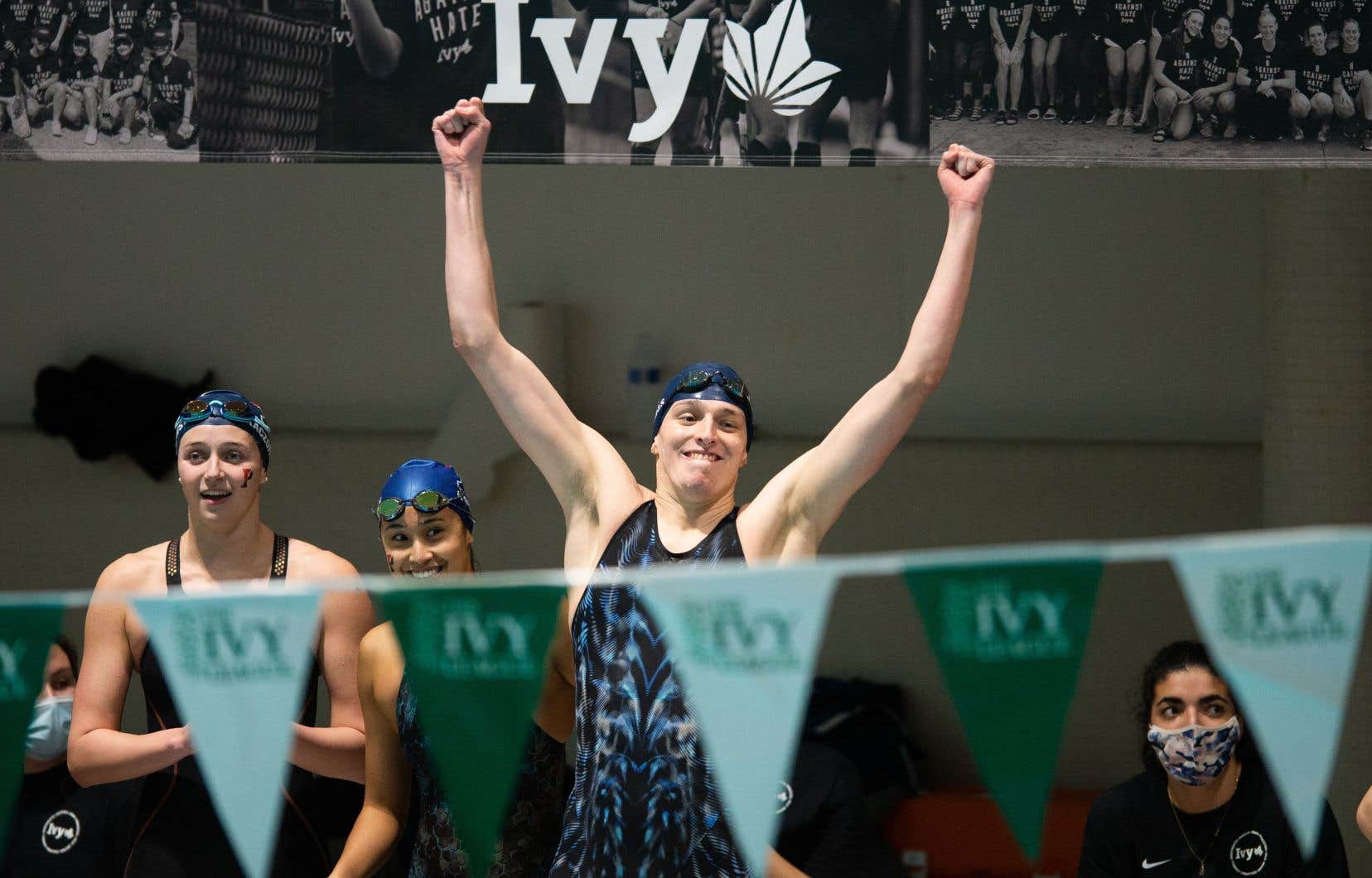Extremely rare at the highest level, transgender athletes have nevertheless sparked an avalanche of specific rules in recent years, pushing the sporting world to clarify the links between gender and performance, and to reconcile scientific debate and human rights.
While qualifying for the Paris Games continues, nothing says that the French capital will see a competitor like New Zealand weightlifter Laurel Hubbard, the first transgender athlete to participate in the Olympic Games (OG), in 2021 in Tokyo.
In addition to Laurel Hubbard, so emotional that she was unable to lift a single bar, non-binary footballer Quinn had won gold with the Canadians. Before the event, she explained that she wanted to embody “a visible figure” for young transgender people, as she would have liked to have had as a teenager.
Former child prodigy skateboardAlana Smith for her part created a surprise during the women’s event of street : smiling and relaxed, the American had not attempted any technical feat, saying she preferred “her happiness” and her “pride” as a non-binary athlete to the quest for a medal.
Transgender athletes therefore arrived on the Olympic scene without crushing their category, far from the controversies arising around certain hyperandrogenic athletes – women with a natural excess of male hormones – like the South African Caster Semenya, double Olympic champion in the 800m (2012, 2016), deprived of competition since 2018 because she refuses to lower her testosterone levels, and in the middle of a legal battle at the European Court of Human Rights.
The “challenge” of scientific evidence
For sporting bodies, however, the two subjects raise similar questions: if women achieve lower performances than men in almost all disciplines, should access to the women’s category be controlled? And how ?
In 2004, for its first regulation on transgender athletes, the International Olympic Committee (IOC) required a sex reassignment operation at least two years before registration in a new category – a criterion lifted in 2011 -, as well as “therapy hormonal” verifiable for “a period long enough to minimize competitive advantages linked to gender”.
But in November 2021, the Olympic body invited the international federations (IF) to establish their own policy, by proposing ten principles: aim for sporting “fairness” by tracking down “unfair and disproportionate” physiological advantages; rely on data specific to their discipline; but also respect the right to privacy, non-discrimination, and avoid invasive examinations and pressure to follow hormonal treatment.
Most federations “were primarily demanding scientific research”, which remains “a challenge”, explains to AFP sociologist Madeleine Pape, specialist in gender and inclusion at the IOC, and former opponent of Semenya at the 2008 Olympics.
“There are very few studies that rely on a sufficiently robust sample of transgender athletes,” emphasizes Ms. Pape. Furthermore, they analyze “a very limited range of athletic characteristics”, such as strength or cardiovascular capacity, when sports performance is multifactorial.
Lia Thomas rejected
For Magali Martowicz, head of human rights at the IOC, it was also necessary to raise awareness of the legal and human aspects, since “transgender athletes are so few in number that there is a certain degree of ignorance” about their journey and their experience.
Among the cascade of regulations that have emerged in recent years, the strictest comes from World Rugby, which purely and simply excludes transgender players from women’s competitions, citing in particular the “too high risk of injury” in this contact sport.
The athletics, swimming and cycling federations require a transition “before puberty” – which in practice amounts to virtual exclusion, as most countries do not allow such early gender change.
And American Lia Thomas, the first transgender swimmer to win an American university competition, was unable to challenge this rule: she was dismissed in mid-June by the Court of Arbitration for Sport, for failure to be admitted to the elite category by USA Swimming.
From tennis to triathlon, many authorities have set a period during which testosterone levels must not exceed a certain threshold, while several Olympic sports stand out: shooting, which concluded that there was “no advantage” linked to male hormones, and especially gymnastics or judo, which have not adopted any international rules in this area.
